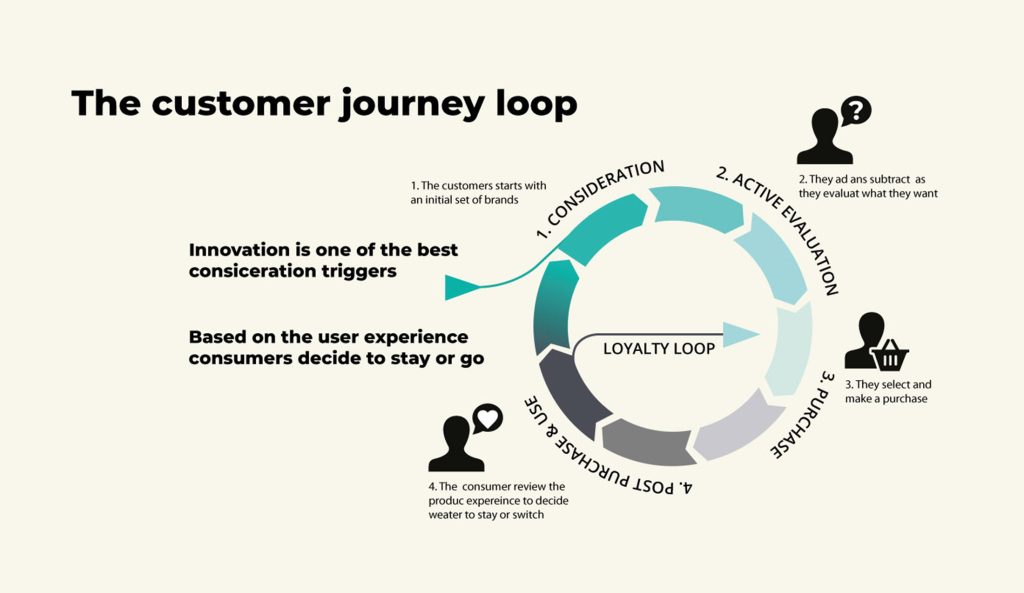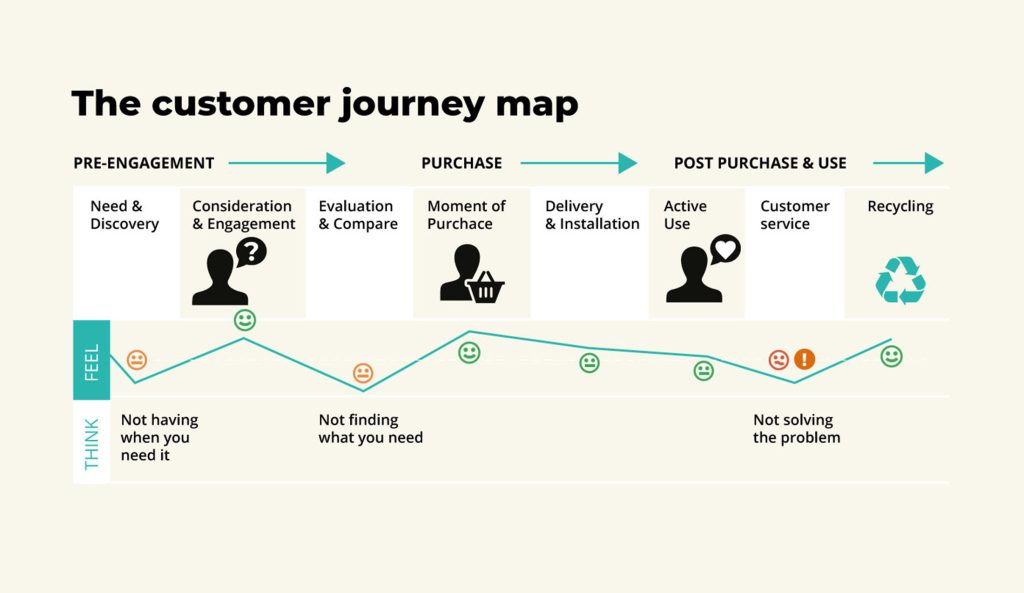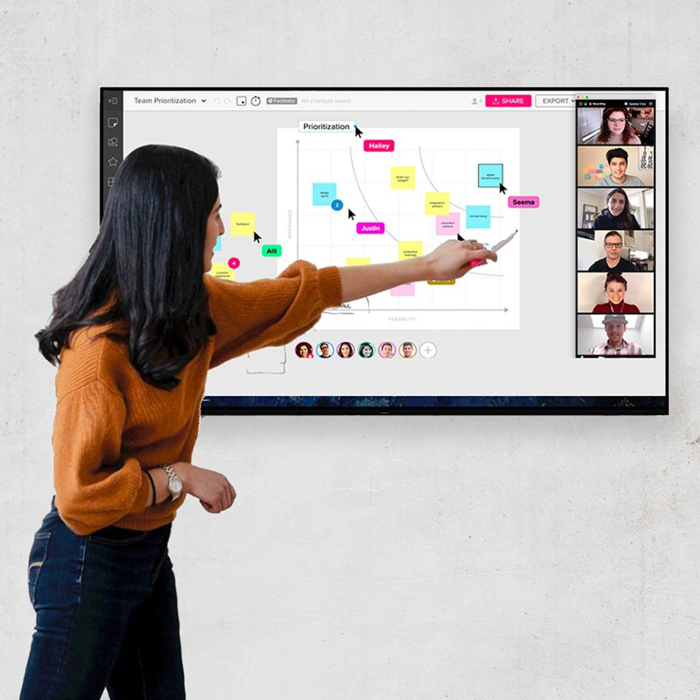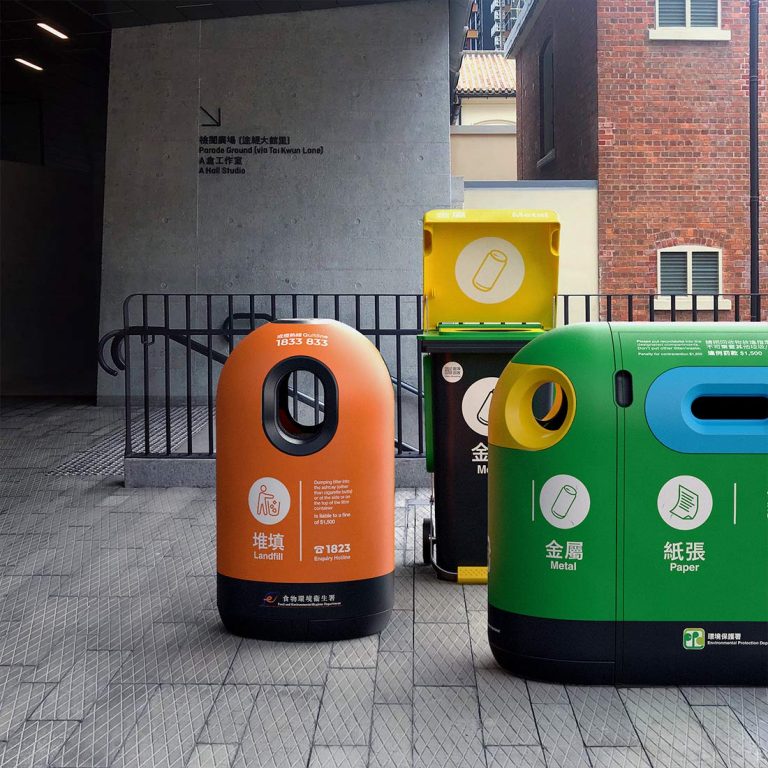For all brands, the ultimate goal is to motivate their customers to make a purchase. What motivates them to buy changes over time, with trends, attitudes and the development of new technology. Because of the constant change it is therefore in the interest of companies to continuously transform their offers to keep them relevant to the needs of their consumers.
In the past decades, marketers have used the traditional marketing funnel to motivate or ‘push’ the consumers forward, and in that relied on marketing to lead the way in to new markets. This has been done in stages. The customers enter the funnel when becoming aware of the product through ad campaigns or other marketing channels. If they manage to craft a convincing message that sticks, the customer enter the consideration phase together with other similar brands in the category.
In this phase brands can develop the relationship and transform the consideration into an intent to buy. If all key indicators are ticked off the consumer will make the purchase. If the customer was happy with the initial product experience and other aspects of its use, they would repurchase and become loyal customers. That was the game we played. A one sided communication form the company.
What has changed
What we have discovered is that there are some major flaws with this model.
- Only 13% of our consumer are loyal driven. The rest of us are still shopping after a purchase.
- 58% switch brands from one cycle to the other. As we move along the consideration phase the consumer increase the brands of we can consider to buy through the influence the internet and social media. Opposite to the traditional funnel.
- The battleground to win is in the initial consideration phase. 2/3 of the time we purchases the brands in our original consideration set to whom we have the best relationship to.
The digital journey
In an increasingly digital age we follow a very different consumer journey. We have seen the emergence of an increasingly informed consumer. Therefore we need to change our perception of the funnel to something more appropriate and relatable and in dialogue with the consumer.
Instead of a funnel we refer to the customer journey to a circular journey with four primary phases representing potential battlegrounds where marketers can win or lose: Consideration, Evaluation, Closure and Post-purchase. Consumers experience them with initial Consideration on one side and Purchase on the other.
The changing behaviour can be traced back to the digital tools in our hand but also by the overwhelming selection of offers the consumers are exposed to on a daily basis. This has triggered some rational behaviours simplifying the decisions we make in our daily life.

Pulling in information
As humans have a natural shortfall in processing power and we constantly look for ways to simplify the evaluation. Because of our brains natural elimination process consumers start with a pre-established set of brands in each product category. Usually 2-3 different brands that we know from experience or by exposure. This can be applied to most categories. The customer then begins an active evaluation process, where they evaluate the pros and cons of each option and continue to “pull in” the information they need in order to convince themselves it’s worth their hard earned dollars.
Throughout this journey the consumer read up on reviews, take note of recommendations, rely on friends, compare with competitors and abstracting the data needed to make an informed decision. In this phase the set of brands considered can double from the initial set.
The interesting piece of insight is that when we finally make the selection and move to a purchase, researcher have noted that in 2 out of 3 occasions the consumer end up buying a brand from the pre-established brands already set in our mind at the start. This happens in almost all market categories and it leads us to conclude that if we want our brand to grab market shares we need to find ways to be included in that so important initial consideration set.
Post-purchase
After we made the purchase we enter the second part of the loop, post-purchase or the user experience journey. That is when we start interaction with the purchase, unboxing, installing, using, calling for support, repairing and finally discarding the product in a way we hope is sustainable and environmentally conscious. It is here during post-purchase phase we gather user experience that dictate whether we will return an enter into a loyalty loop and buy it again or exit to re-consider a new journey with another brand.
This whole process is an ongoing loop – the customer will always reevaluate their decision to continue using a brand based on the user experience and in parallel to the new innovation offered by other brands that are strong enough to compete with the initial consideration se

This whole process is an ongoing loop – the customer will always reevaluate their decision to continue using a brand based on the user experience and in parallel to the new innovation offered by other brands that are strong enough to compete with the initial consideration set.
By mapping this journey in a customer journey map where each step is tracked and measured you can get a better picture on where you have your pain points in the journey.



